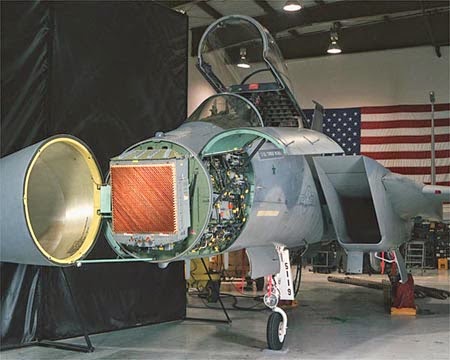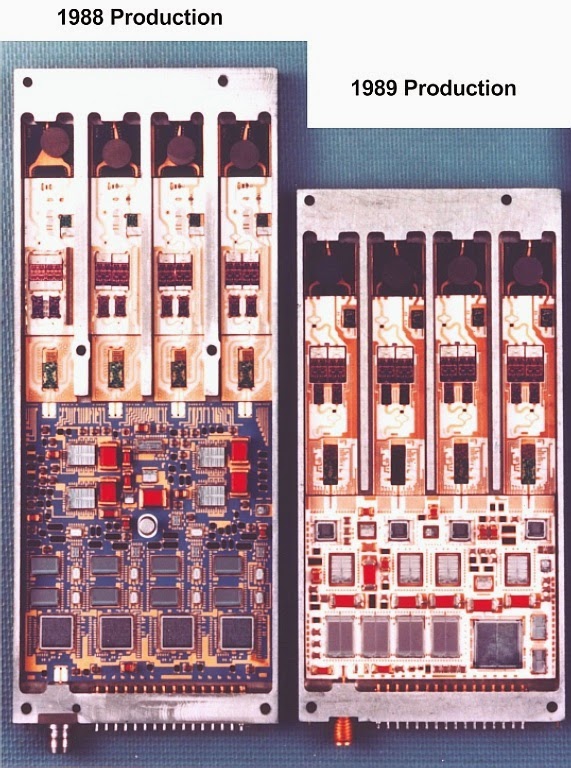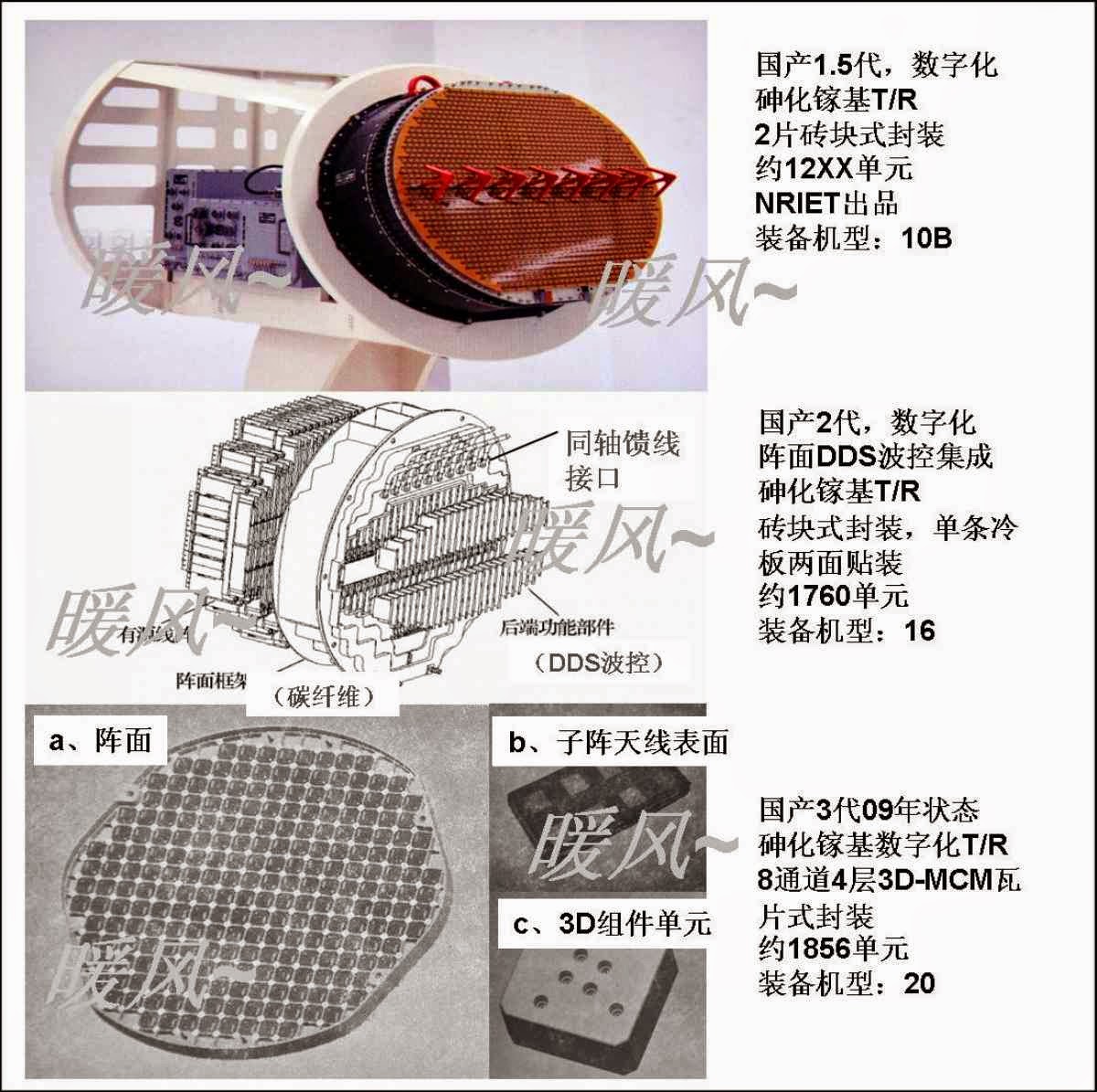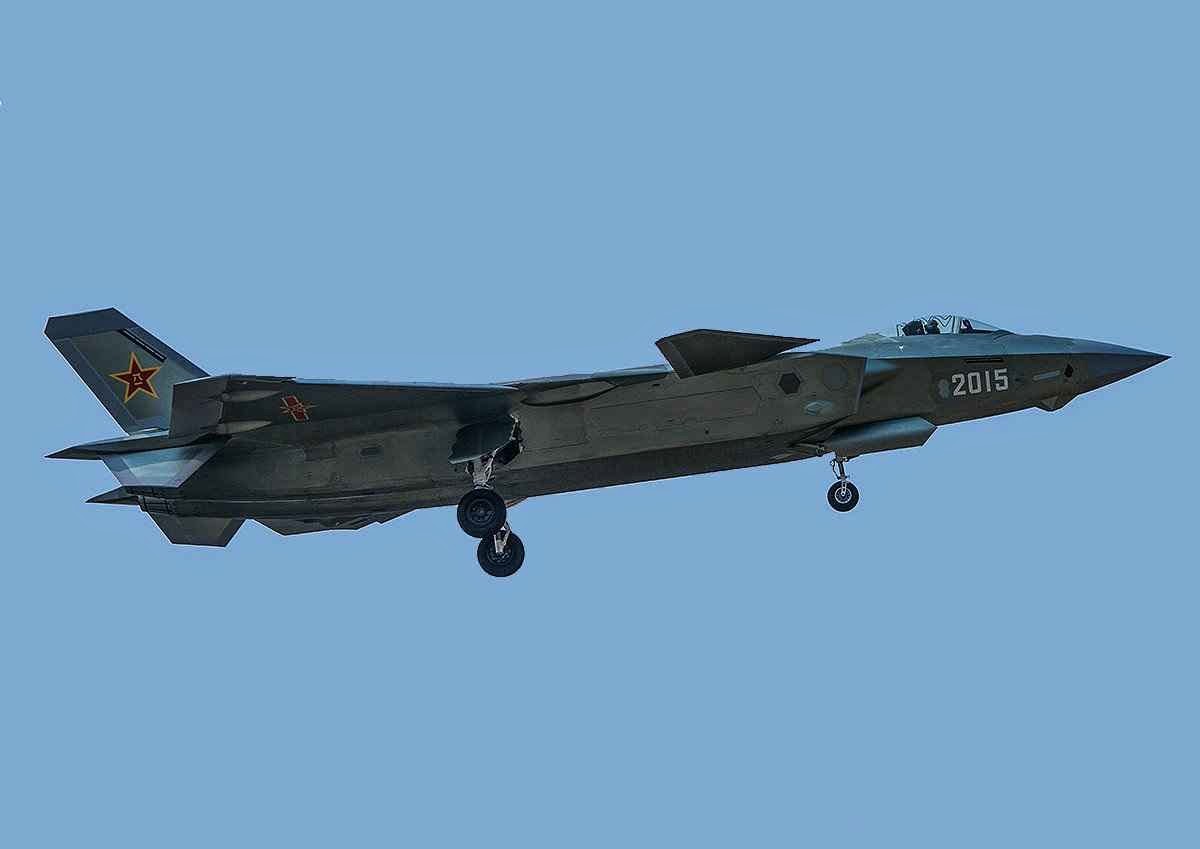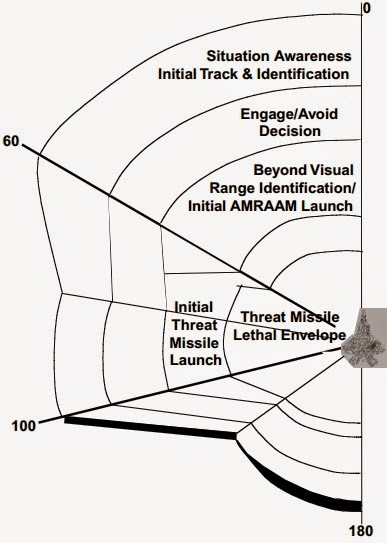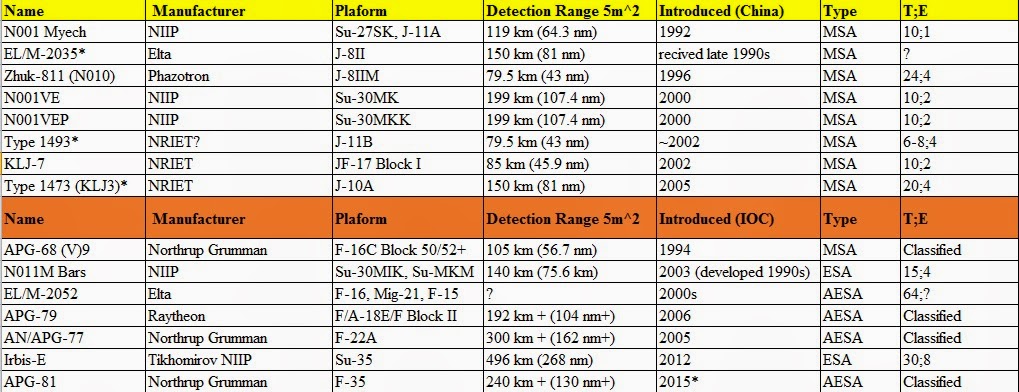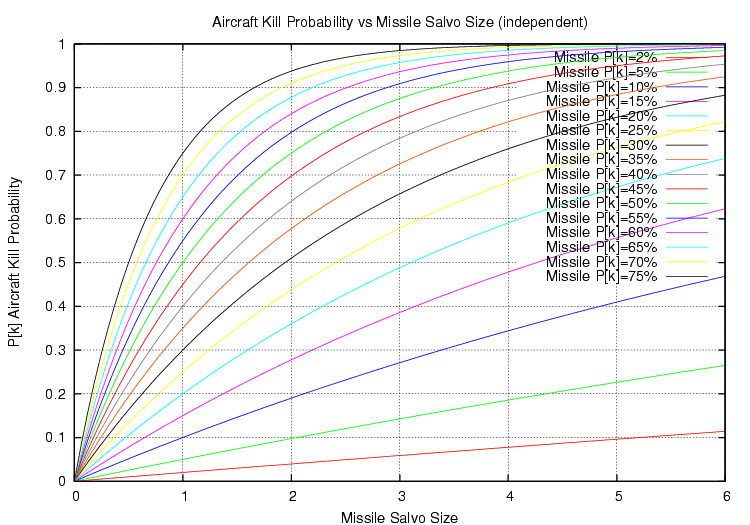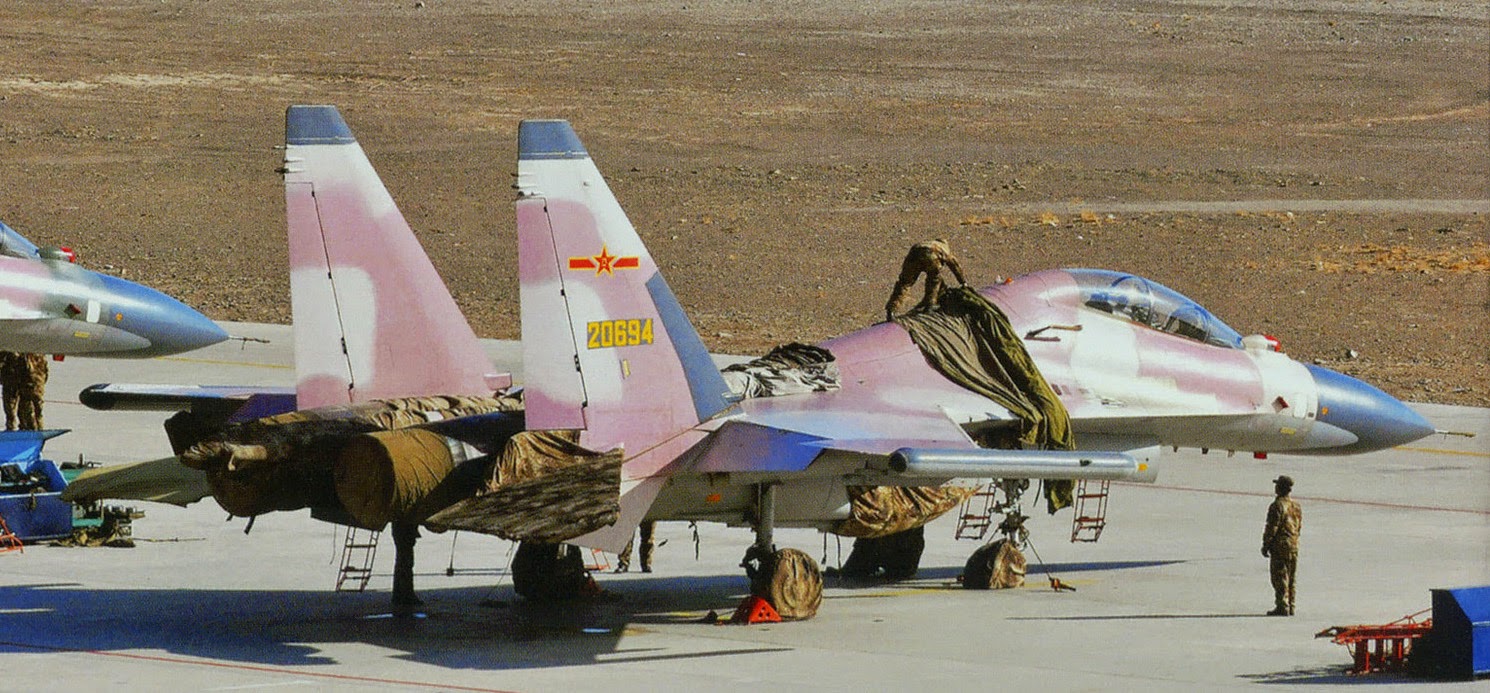Many discussions with respect to the "relative stealthiness" of fighter aircraft are limited to merely comparing radar cross section estimates while entirely neglecting alternate means of detecting aircraft such as RWRs or other emission locator systems. David Axe succinctly compares the process of how RWRs function to how a flash light carried by another person is easily visible in a dark room. AESAs emit a substantial amount of energy, especially designs with a greater number of T/R modules, which enables passive emission locator systems to detect an AESA. The addition of an LPI software for AESAs mitigates the risk of RWR detection.
"The radar's signals are managed in intensity, duration and space to maintain the pilot's situational awareness while minimizing the chance that its signals will be intercepted.More distant targets get less radar attention; as they get closer to the F-22, they will be identified and prioritized; and when they are close enough to be engaged or avoided, they are continuously tracked" - Bill Sweetman, 2001
Image 6: Engagement boundaries for the AN/APG-77. Targets automatically receive higher tracking accuracy as they enter engagement boundaries in proximity to the F-22. The boundary concept facilitates automated sensor tasking and efficient sensor usage which contributes towards increased situational awareness and fewer emissions by the array (Ronald W. Brower, 2001). Image Credit: Ronald W. Brower & USAF, 2001.
However, LPI software is not foolproof as demonstrated between tests involving F-22s and a CATbird avionics testbed equipped with the F-35's avionics package*. The F-35's avionics were able to jam and track multiple F-22 and F-15 radars during the exercise (Fulghum, Sweetman, Perrett & Wall, 2011).
Implications
Graphic 1: The data present in graphic 1 are assembled from numerous sources which are cited below. The formula: "(km known) * (new rcs/rcs known)^(0.25) = detection range of new rcs" was used to calculate many of the figures. T;E = maximum number of targets tracked & maximum number of targets engaged simultaneously.
In summary, the high T/R module counts detailed in image 3 are likely too high to be considered legitimate. This is not to marginalize the significant advancements made by the Chinese aerospace industry in avionics, but the level of misinformation and disinformation prevalent within publications detailing Chinese military systems necessitates a strict research approach. The figures cited in image three are not consistent with what one could reasonably assume given the technological development of fighter mounted AESAs within other countries such as Russia, Israel, and the United States. Ultimately, determining the exact T/R module count for various Chinese AESAs is of little consequence when compared to the underlying trend that Chinese avionics firms have made staggering advancements over the past decade.
The vast majority of fighter aircraft currently deployed by the People's Liberation Army Air Force (PLAAF) use Soviet designed MSAs such as the N010 and N001 series. Even the most capable of China's MSAs, the N0001VEP equipped on the Su-30MKK, can only track ten targets while engaging two simultaneously. Originally, the J-11 could only track ten targets and engage one before being upgraded to engage two targets simultaneously after 2003 (Global Security, 2014). The addition of even a comparatively primitive AESA would significantly increase the lethality of China's fourth and fifth generation fighter forces. One of the main constraints of China's existing fighter force detailed in graphic one is the limited detection range, tracking, and engagement numbers of the MSAs relative to Russian ESAs and American AESAs.
In a 2008 RAND report,
Air Combat Past, Present and Future, John Stillion and Scott Perdue state the PLAAF has at least a three to one numerical superiority over the United States in a conflict over the Taiwanese strait around 2020. As part of the
, each Flanker is equipped with between eight and twelve beyond visual range (bvr) air-to-air missiles in which multiple missiles are fired against each target to increase the probability of a kill (pk). In a modern digital radio frequency memory jamming environment, even capable radar guided missile such as the AIM-120 will likely have lower than a 0.50 pk (RAND, 2008). Hence the Russian bvr doctrine of launching at least two missiles against a single target as the pk increases as the number of missiles fired increases.
Image 7: Pk vs. missile salvo size. The AIM-120 has a pk. of 0.46 in combat against non-jamming targets. Image Credit: Air Power Australia, 2008.
The addition of fighter mounted AESA radars would enable Chinese pilots to launch missiles against a larger number of targets in the opening salvo of an air-to-air engagement as well as providing increased situational awareness for Chinese pilots when compared to current MSAs. The ability to engage more targets at beyond visual range effectively complements the PLAAF's numerical superiority by allowing each aircraft to make full use of their comparatively larger payload of air-to-air missiles. It is worth noting that the United States will continue to deploy large numbers of fourth generation aircraft such as the F-15C, F-16C/D, and F/A-18E/F into the late 2020s to 2030s; these aircraft will be especially put at risk as a result of improvements in Chinese avionics with respect to improved PLAAF bvr capabilities.
The enhancement of situational awareness gained by the deployment of AESAs is especially important given the shift within the PLA from Soviet and Russian inspired doctrines towards embracing an increasing number of
such as network centric warfare:
"Almost all of the PLA’s 2013 exercises focused on operating in 'informationized' conditions by emphasizing system-of-systems operations, a concept that can be viewed as the Chinese corollary to U.S. network-centric warfare. This concept requires enhancing systems and weapons with information capabilities and linking geographically dispersed forces and capabilities into an integrated system capable of unified action. These operational training reforms are a result of the Outline of Military Training and Evaluation (OMTE), which was last published in mid-2008 and became standard across the PLA on January 1, 2009. Since that time, the PLA has pushed to achieve OMTE objectives by emphasizing realistic training conditions, training in complex electromagnetic and joint environments, and integrating new technologies into the PLA force structure." - Department of Defense, 2014

